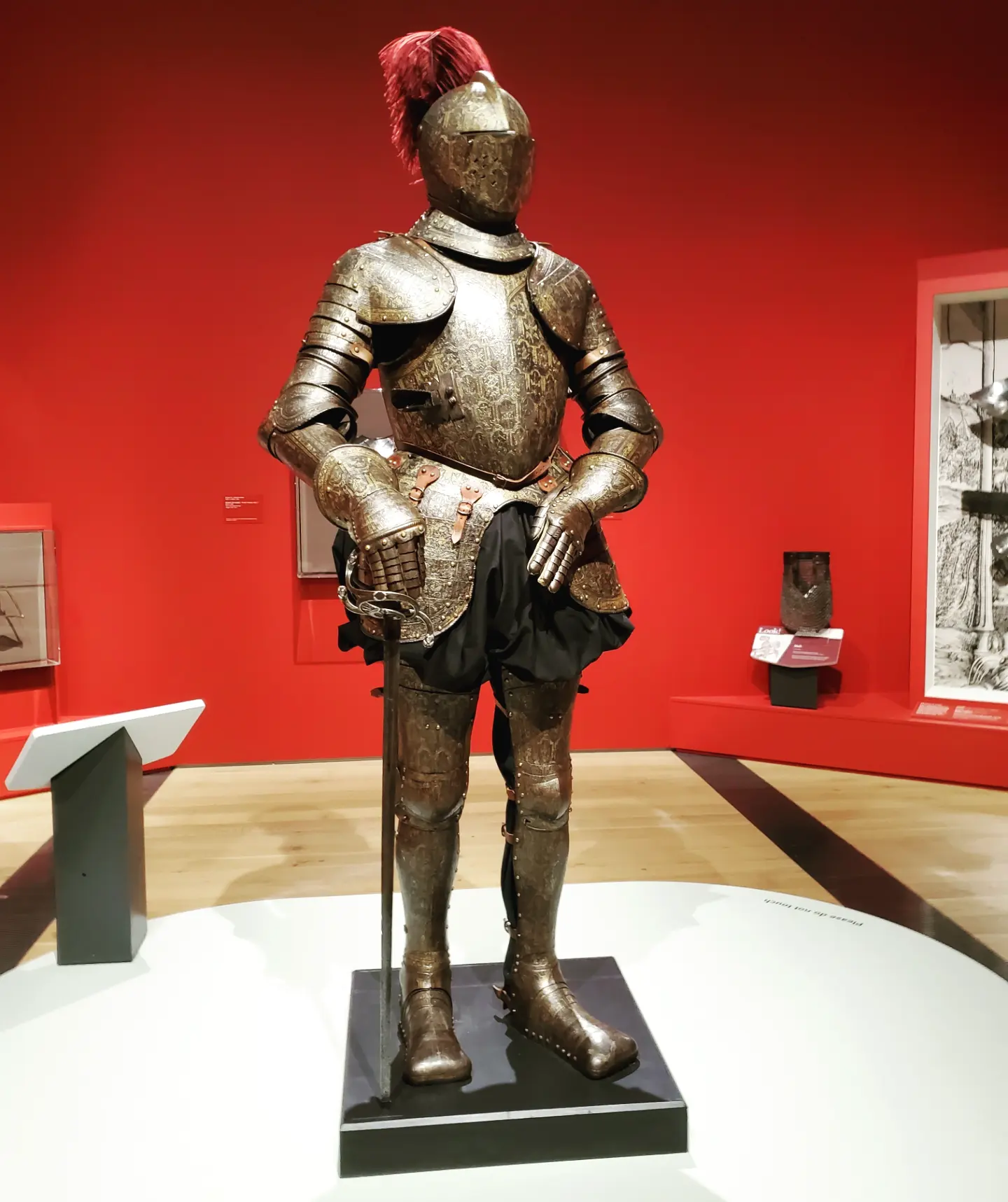
From classic works of literature to modern-day pop culture, the indelible image of a knight in shining armor may make the wearer of the archetypal shield of steel no more than a quixotic notion. But beyond the Knights of the Round Table and the warriors of Westeros lies an intricate history of the culture and its craft, forged in realism and practicality through the centuries.
Plate armor is believed to have originated during the Middle Ages in the 1300s. A century later, the suit of armor became well established in Europe, with earlier styles clothed in fabric – a practice that was eventually discarded to reveal the all-steel ensemble as the norm. The pinnacle of armor design came during the Renaissance in the 1500s, when suits were made to resemble fashionable apparel of the day.
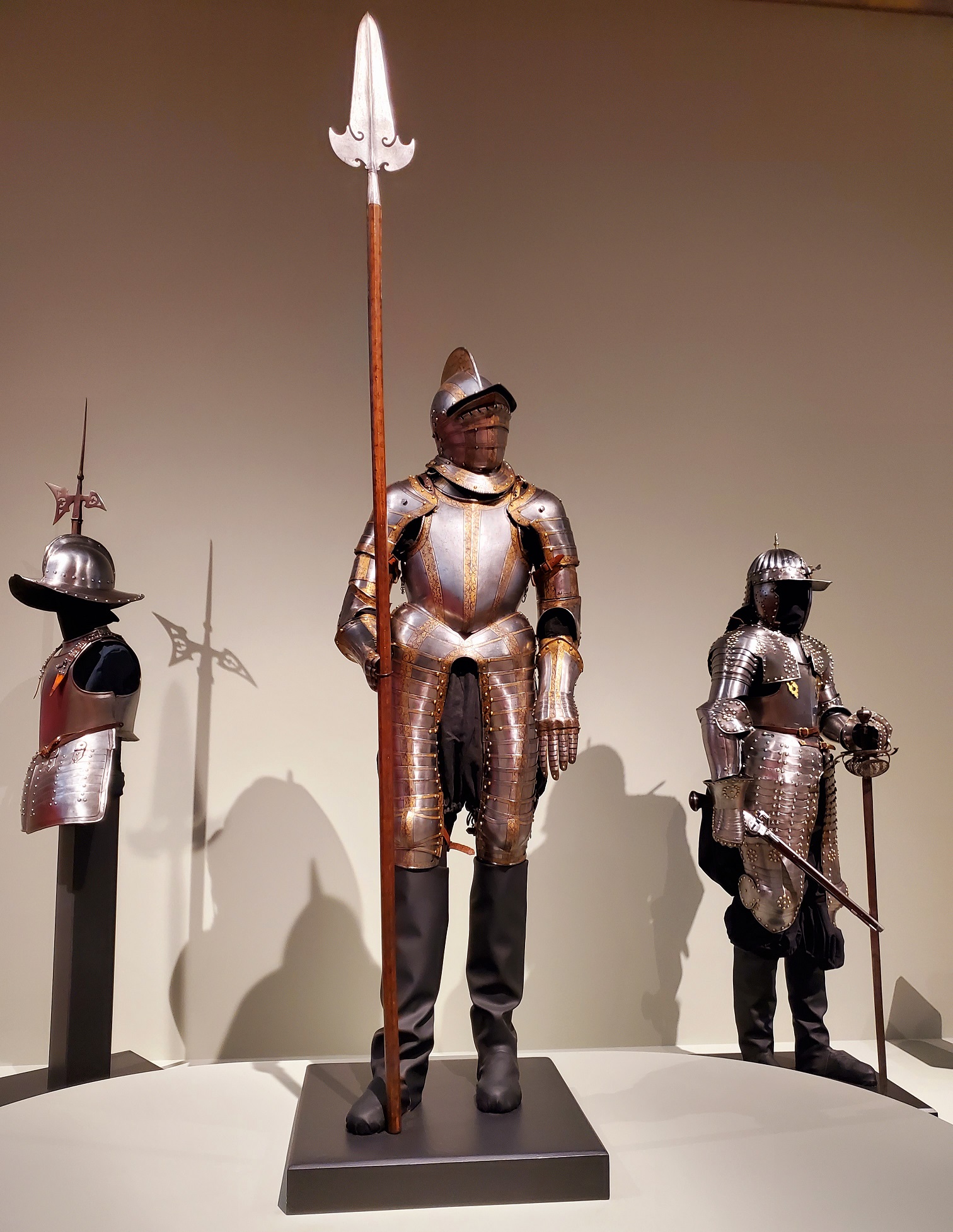
These days, the suit of armor takes on a nuanced existence, be it as protective gear for the military or as Afrofuturistic ensembles for the citizens of fictional Wakanda.
The transformation of armor across cultures and time is chronicled in “Age of Armor: Treasures from the Higgins Armory Collection at the Worcester Art Museum,” a new exhibition at the Saint Louis Art Museum that opens this weekend.
The Higgins Armory Collection is one of the largest collections of arms and armor in the country, second only to the Metropolitan Museum of Art. The exhibit in St. Louis comprises more than 1,500 objects dating back to an Egyptian bronze axe blade from 2000-1750 BCE to seven full suits of elaborately crafted armor from the Renaissance era, as well as the addition of examples from the 21st-century, including an iconic symbol of movie villainy to a beloved Marvel superhero’s suit.
“This relationship with clothing and fashion is really fascinating – and once it’s pointed out, it becomes really apparent, to see the contours of the cut in the steel,” said David Conradsen, curator of Decorative Arts and Design at the Saint Louis Art Museum.
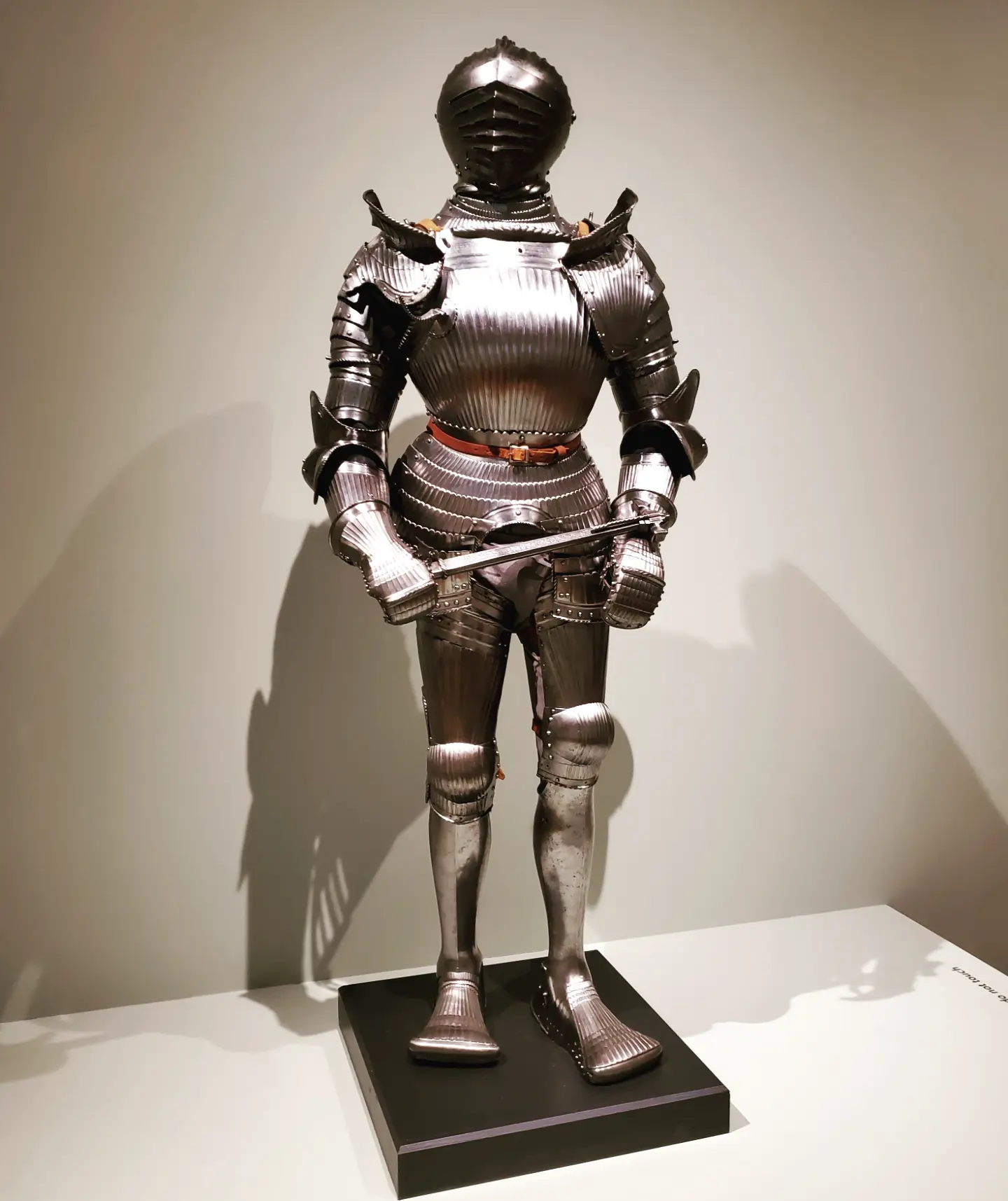
Battlefield armor – or field armor – was intentional in design, balancing mobility, lightness and visibility with protection. Field armor weighed an average of 60 pounds, not including additional pieces utilized for different types of battle and sports such as jousting tournaments. Because horsemanship was an essential skill for knights, even the horses wore shaffrons (horse’s head armor) tailored to complement the rider’s suit. Regardless of who wore it and why, styles would evolve for purposes both defensive and au courant, peaking during the Renaissance.
The 1500s represented the “tour de force of armor-making,” according to Conradsen, when designs emulated the popular clothing styles of the time: fluted surfaces and ribbing, broad silhouettes, squared necklines, narrow waistlines and wide-toed sabatons that mimic footwear.
The intricacies also reflect the armorer’s high degree of skill and craftsmanship of hammering into steel. Examples include the Triple-Combed Burgonet from Germany (circa 1550), an open-faced helmet with three raised, ridged combs that resemble a trio of circular saws – or steel mohawks – atop the head.
From Italy, representations of Maximilian-style armor include a breastplate and fauld that evoke the pleated look of a man’s civilian jacket. Even the smooth design for the lower leg armor corresponds to the characteristics of men’s silk stockings widely worn during that era.
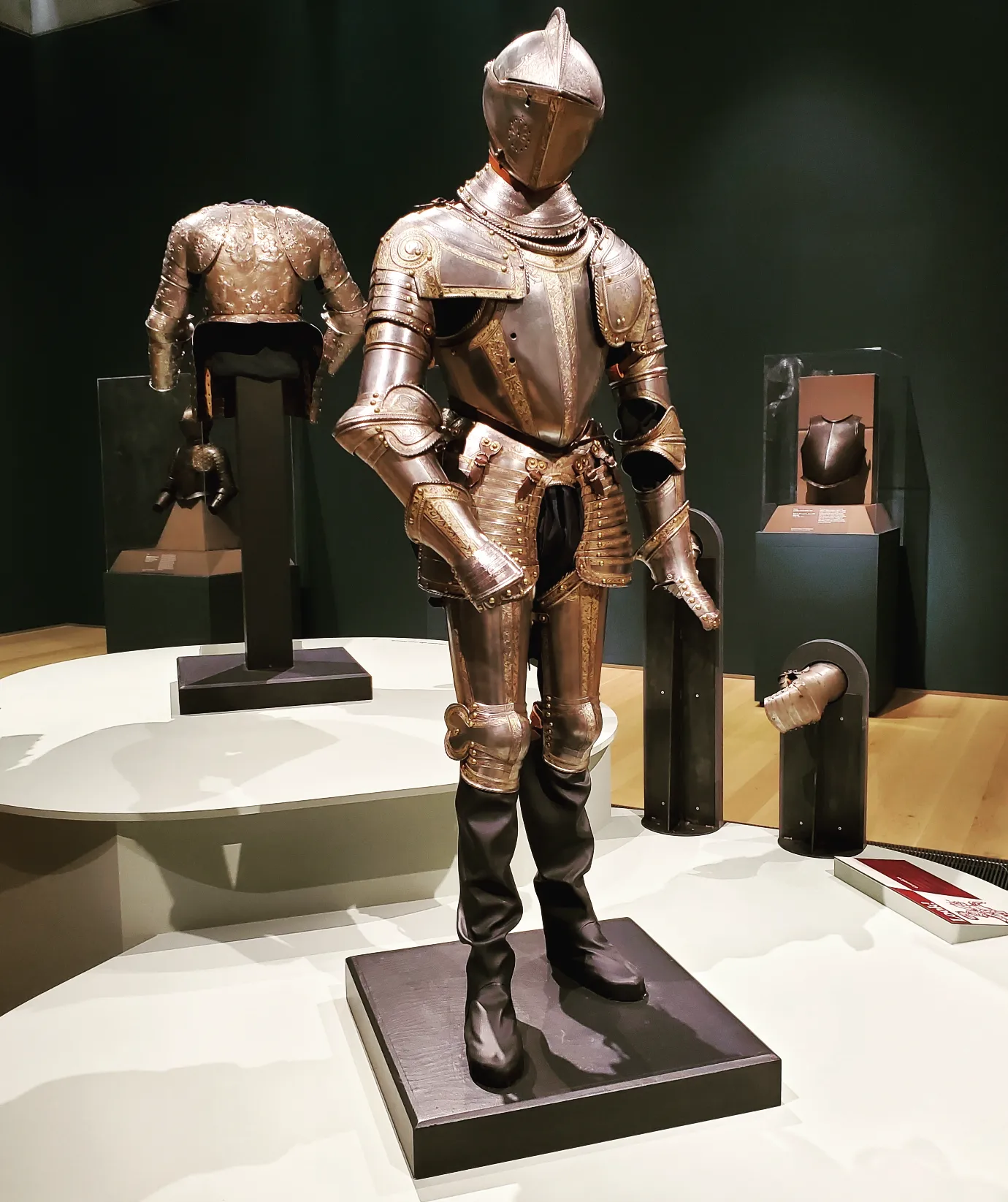
A three-quarter field armor made for the Second Earl of Pembroke in Milan in the 1570s has a projecting peascod belly and flaring tassets to protect the upper thighs. The suit of polished steel was originally a dazzling blue color to highlight its etched design and gilded borders.
There’s also a blued-steel half-armor created in the late 1500s for the Papal Guard. Gilded and engraved with brass and embellished with modern leather, the shield was intended and used for ceremonial purposes.
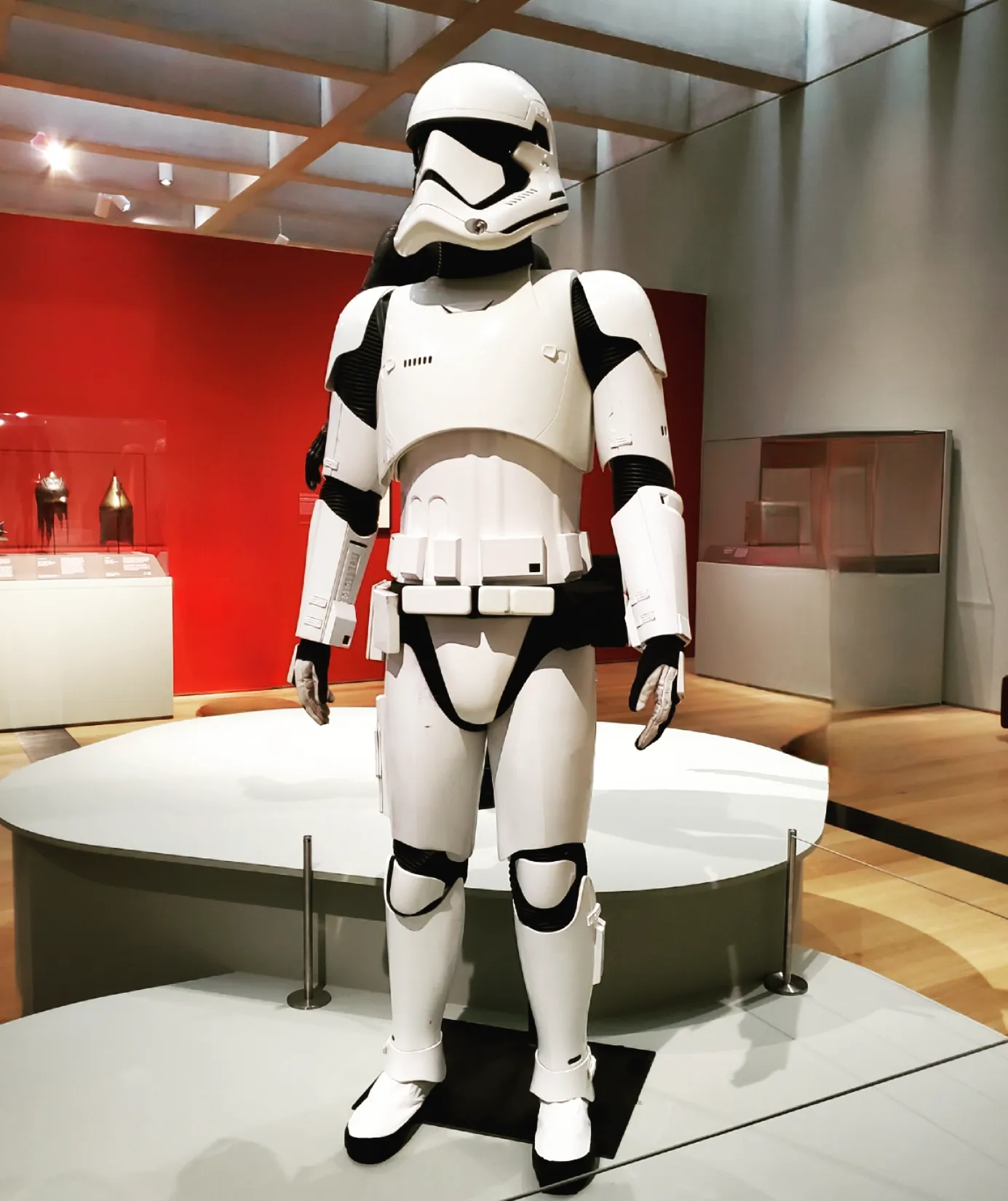
Field armor continued to be utilized by specialized troops up until the 1800s. During World War I, steel helmets, likely modeled after European forms from the 1400s, were worn on the battlefield.
In modern day, evolved versions serve a range of function, from protecting soldiers – demonstrated by a female tactical vest worn by a U.S. Army servicewoman in this decade – to the purely conceptual, as evidenced by a First Order Stormtrooper all-white ensemble featured in “Star Wars: The Last Jedi” and T’Challa’s “vibranium” suit worn by Chadwick Boseman in “Black Panther.”
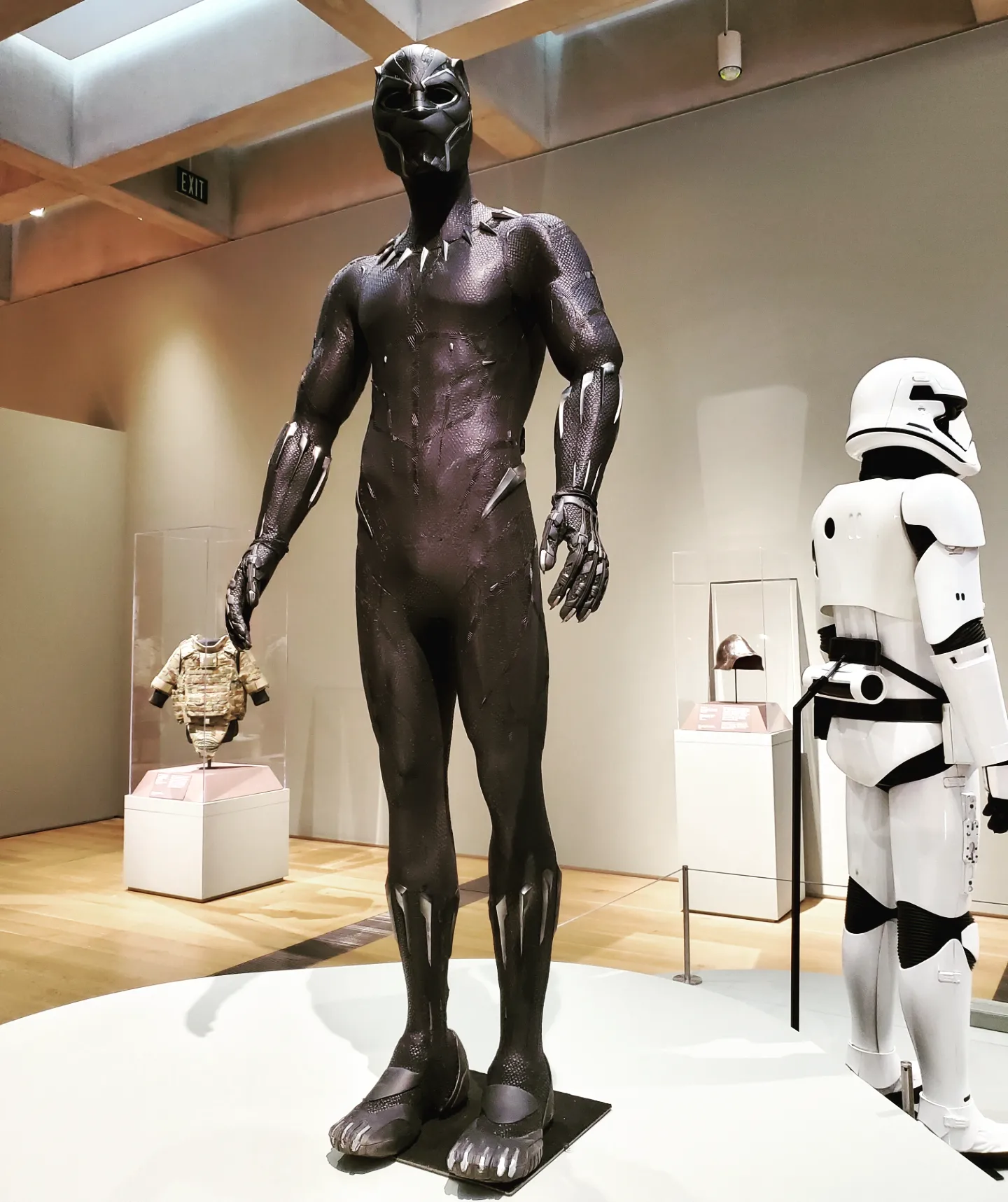
“There’s a certain mystery we’re hoping to demystify a little bit – to show how the armor goes together on the body,” Conradsen said, adding that armor’s archaic association with wars and battles make the wearer seem larger than life. “When you look at examples like the dog-faced visor (from the 1300s), it presents a frightening, inhuman image. And then you have the added aspect of armor in the battlefield, making the person more impregnable, more aggressive.”
With the exhibit, Conradsen hopes to highlight the artistry and workmanship behind armor-making. In addition to the artifacts, depictions of armor in artworks from the museum’s own collection, including rarely seen Flemish tapestries, will be on display.
A free public preview will be held beginning at 4 p.m. on Friday, Feb. 17, with tickets available in person at the museum. The exhibition opens Feb. 18 and runs through May 14. Tickets are $12 for adults ($10 for seniors and students, $6 for children 6 to 12). The exhibit is free on Fridays and free for members any time.
For more information, visit the Saint Louis Art Museum’s exhibit page.





